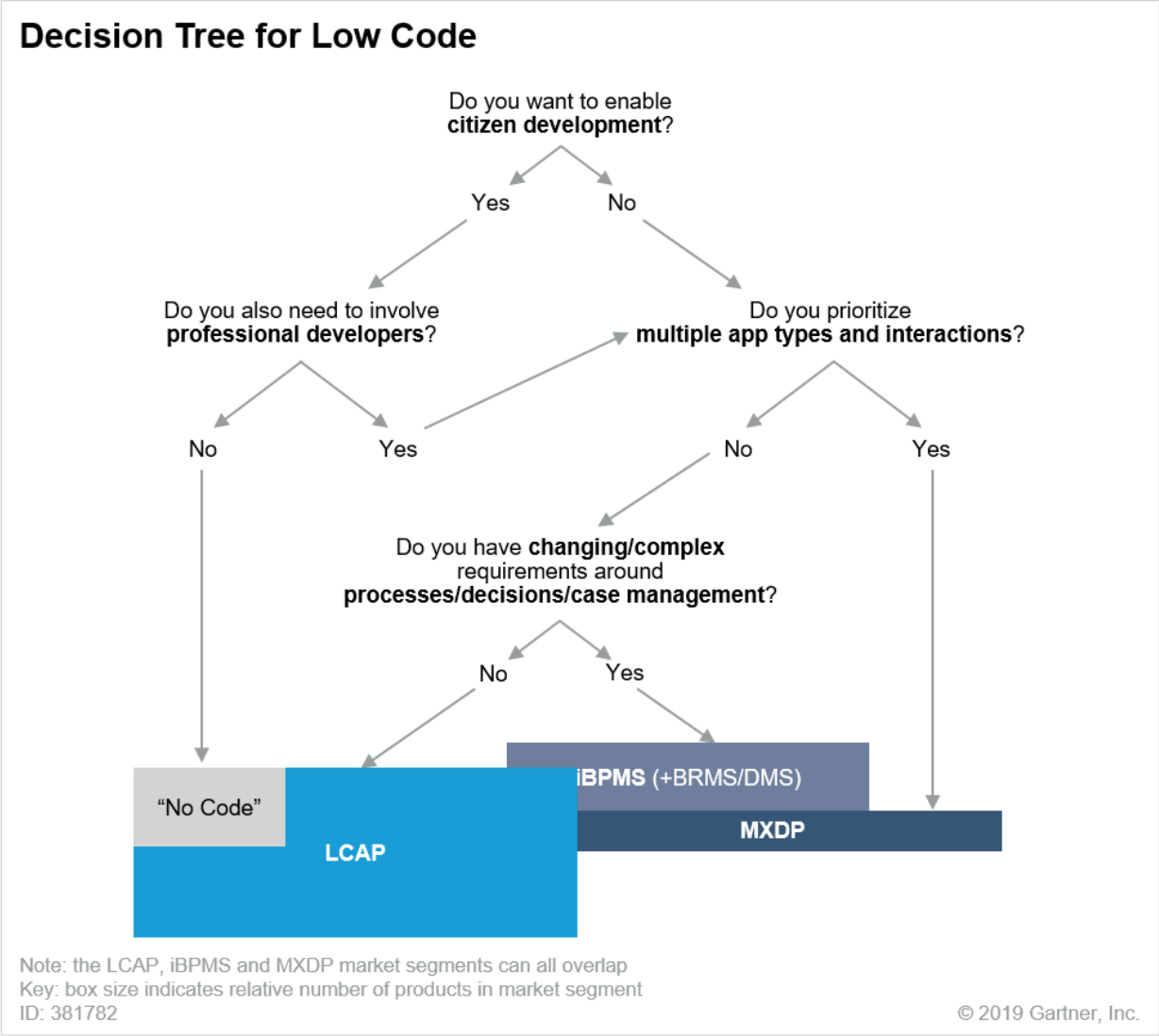What are our data sources?
We use the data sources on the side for ranking solutions and awarding badges in low code / no code development platform category. Our data sources in low code / no code development platform category include;
Low-code development platforms (LCDPs) are also called low-code application platforms (LCAP). They are model-driven development software that provide a visual drag-and-drop- development approach. This facilitates the delivery of applications by reducing time consuming hand-coding as much as possible. These platforms allow organizations to design websites and apps with little knowledge of computer science or software engineering concepts.
To be categorized as a low-code platform, a product must provide an:
AIMultiple is data driven. Evaluate 229 services based on
comprehensive, transparent and objective AIMultiple scores.
For any of our scores, click the information icon to learn how it is
calculated based on objective data.
*Products with visit website buttons are sponsored
We use the data sources on the side for ranking solutions and awarding badges in low code / no code development platform category. Our data sources in low code / no code development platform category include;
review websites
social media websites
search engine data for branded queries
According to the weighted combination of 7 data sources

monday.com

Airtable

OutSystems

Appy Pie

AppSheet
Taking into account the latest metrics outlined below, these are the current low code / no code development platform market leaders. Market leaders are not the overall leaders since market leadership doesn’t take into account growth rate.

monday.com

Airtable

OutSystems

Appy Pie

AppSheet
These are the number of queries on search engines which include the brand name of the solution. Compared to other Software Development categories, Low code / No code development platform is more concentrated in terms of top 3 companies’ share of search queries. Top 3 companies receive 81%, 3% more than the average of search queries in this area.
43 employees work for a typical company in this solution category which is 22 more than the number of employees for a typical company in the average solution category.
In most cases, companies need at least 10 employees to serve other businesses with a proven tech product or service. 122 companies with >10 employees are offering low code / no code development platform. Top 3 products are developed by companies with a total of 700k employees. The largest company building low code / no code development platform is IBM with more than 300,000 employees.
Taking into account the latest metrics outlined below, these are the fastest growing solutions:

monday.com

PowerApps

Airtable

OutSystems

Appy Pie
We have analyzed reviews published in the last months. These were published in 4 review platforms as well as vendor websites where the vendor had provided a testimonial from a client whom we could connect to a real person.
These solutions have the best combination of high ratings from reviews and number of reviews when we take into account all their recent reviews.
This data is collected from customer reviews for all Low code / No code development platform companies. The most positive word describing Low code / No code development platform is “Easy to use” that is used in 11% of the reviews. The most negative one is “Difficult” with which is used in 3.00% of all the Low code / No code development platform reviews.
According to customer reviews, most common company size for low code / no code development platform customers is 1-50 Employees. Customers with 1-50 Employees make up 53% of low code / no code development platform customers. For an average Software Development solution, customers with 1-50 Employees make up 34% of total customers.
These scores are the average scores collected from customer reviews for all Low code / No code development platforms. Low code / No code development platforms is most positively evaluated in terms of "Overall" but falls behind in "Likelihood to Recommend".
This category was searched on average for 13.9k times per month on search engines in 2022. This number has decreased to 13.1k in 2023. If we compare with other software development solutions, a typical solution was searched 1.3k times in 2022 and this increased to 1.3k in 2023.
The rise of citizen developers, better enterprise alignment and increasing productivity are leading to the growing importance of low-code development. You can find a more detailed explanation of this in our research section.
The business team uses visual building blocks to develop applications. Feel free to read our more detailed answer in our research section.
Here are a few questions you need to ask while choosing a low-code development platform:
Is it scalable?
Though the purpose of low-code development is mainly driven by developing relatively smaller and departmental applications, there are enterprise-wide LCDPs as well. As the number of users increases, being able to scale becomes a matter for a company. Therefore an organization should consider a scalable LCPD if they want to integrate low-code technology within the enterprise.
Does it have a no-code option?
Most low code platforms require some input codes for business logic and process flow descriptions that's why enterprises still need developers for low-code development. On the other hand, some platforms in the market have a no-code option which enables citizen developers to build applications with minimal involvement from the tech team.
Does it allow collaboration across business and IT teams?
Developing an application mostly needs teamwork. LCDPs enable users to interact with each other while they’re working on the application. Executives need to pay attention if the platform has collaborative working features.
Is it available on the cloud?
Some platforms took off as on-premise applications and have limited cloud support. It would be great to have a platform with cloud support since most organizations are either on the cloud or plan to be on the cloud soon.
Is it secure?
Security is an important concern for businesses from various industries. The right tool for businesses is the one that has all the required security certifications and is approved by your company's information security team
You can find more on each use case on our low code research article.
Gartner identifies these different platforms that feature similar solutions to low-code development technologies. Each platform can meet the different needs of an enterprise. Below is their suggested decision tree for a procurement decision regarding an app development platform.
